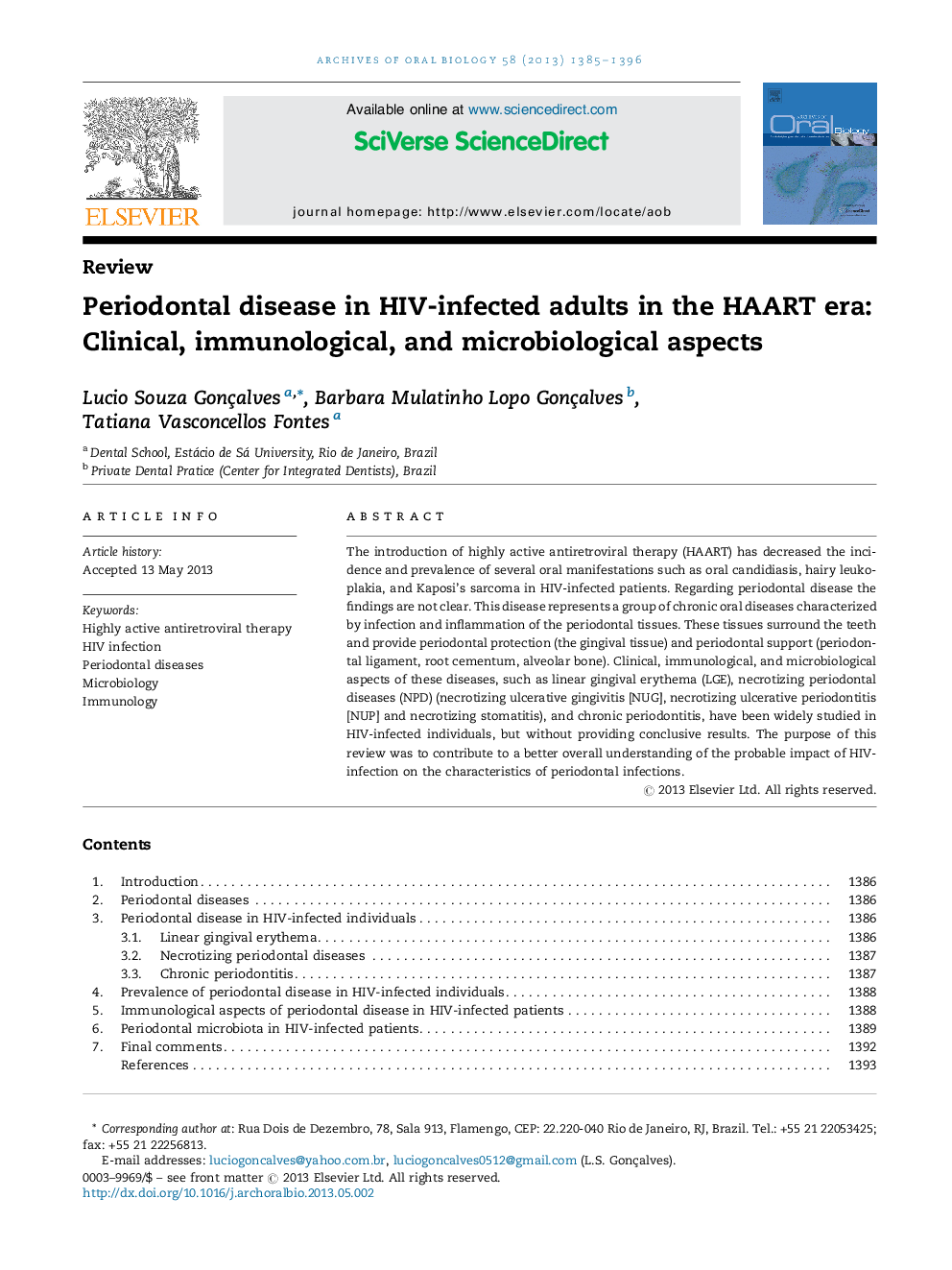| Article ID | Journal | Published Year | Pages | File Type |
|---|---|---|---|---|
| 6051748 | Archives of Oral Biology | 2013 | 12 Pages |
Abstract
The introduction of highly active antiretroviral therapy (HAART) has decreased the incidence and prevalence of several oral manifestations such as oral candidiasis, hairy leukoplakia, and Kaposi's sarcoma in HIV-infected patients. Regarding periodontal disease the findings are not clear. This disease represents a group of chronic oral diseases characterized by infection and inflammation of the periodontal tissues. These tissues surround the teeth and provide periodontal protection (the gingival tissue) and periodontal support (periodontal ligament, root cementum, alveolar bone). Clinical, immunological, and microbiological aspects of these diseases, such as linear gingival erythema (LGE), necrotizing periodontal diseases (NPD) (necrotizing ulcerative gingivitis [NUG], necrotizing ulcerative periodontitis [NUP] and necrotizing stomatitis), and chronic periodontitis, have been widely studied in HIV-infected individuals, but without providing conclusive results. The purpose of this review was to contribute to a better overall understanding of the probable impact of HIV-infection on the characteristics of periodontal infections.
Keywords
Related Topics
Health Sciences
Medicine and Dentistry
Dentistry, Oral Surgery and Medicine
Authors
Lucio Souza Gonçalves, Barbara Mulatinho Lopo Gonçalves, Tatiana Vasconcellos Fontes,
